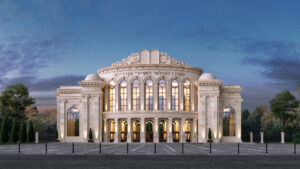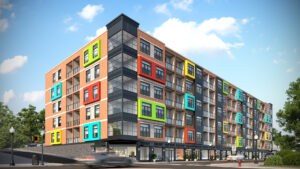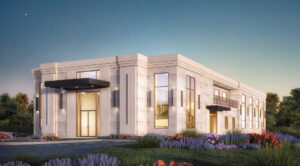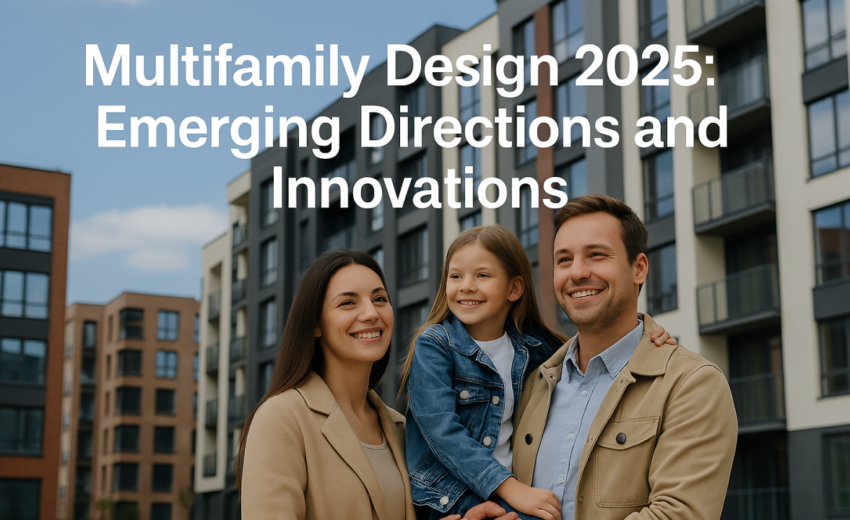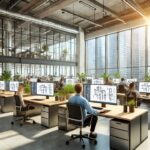April 7, 2025
Architects and designers are increasingly adopting a resident-first mindset, placing a strong emphasis on gathering user feedback early in the planning process. By understanding residents’ lifestyle preferences, interests, and priorities prior to design, professionals are better equipped to create spaces that reflect the evolving needs of today’s renters.
Common themes emerging from this feedback include a growing desire for environments that foster community engagement and support hybrid lifestyles. Popular amenities now frequently feature co-working areas, wellness-focused zones, fitness centers, and enhanced access to outdoor spaces. Additionally, with pet ownership on the rise since the COVID-19 pandemic, there has been a marked increase in demand for pet-friendly features such as dog parks and pet wash stations.
Within individual units, flexibility remains key. Residents are prioritizing adaptable spaces that can seamlessly function as quiet work zones, guest accommodations, or extensions of living areas, offering maximum utility without compromising comfort.
As a result, these insights are directly informing design strategies, shaping environments that align more closely with tenant expectations. Among the many preferences observed, the following trends are set to define multifamily living in 2025:
Redefining Design Through the Lens of Sustainability
As we move into 2025, sustainability and carbon-conscious development remain central to tenant expectations and buyer priorities in the multifamily sector. Environmental, Social, and Governance (ESG) considerations are no longer peripheral, they are now embedded in the core strategy of leading projects, offering developers a strategic advantage in an increasingly discerning marketplace.
This growing emphasis on sustainability is reshaping design standards. Energy-efficient infrastructure and smart technologies are becoming baseline expectations rather than value-add features. From high-performance HVAC systems and LED lighting to intelligent metering and integrated renewable energy solutions such as solar power, these innovations collectively drive reductions in energy use and operational carbon emissions.
Beyond compliance, these enhancements deliver a compelling value proposition, offering residents a future-forward, environmentally responsible lifestyle, while enabling developers to position their properties as both progressive and performance-driven.
Evolving Work-from-Home Expectations in Multifamily Design
Accommodating the diverse lifestyles of today’s residents requires multifamily developments to prioritize flexibility, inclusivity, and adaptability in both private and shared spaces.
As hybrid work becomes a permanent fixture, the integration of dedicated work-from-home features has shifted from a luxury to a baseline expectation. Modern multifamily communities are now intentionally designed to support a variety of work styles, incorporating high-speed connectivity, acoustically treated environments, and ergonomic furnishings across both in-unit layouts and shared amenity areas.
These purpose-driven design elements not only enhance daily productivity but also position properties as responsive to the evolving needs of the modern resident.
Personalization as a Competitive Edge in Multifamily Living
As the multifamily market evolves in 2025, personalization is becoming a defining value proposition. Forward-thinking developments are increasingly offering customizable living experiences, empowering residents to shape their environments according to personal tastes and functional needs.
Features such as adaptive lighting, smart thermostats, and modular furnishings are no longer optional, they are emerging as standard tools for flexibility and lifestyle alignment. The integration of advanced technologies, including smart home automation, digital concierge platforms, and enhanced security systems, further elevates convenience and connectivity.
From finish selections like paint, flooring, and fixtures to configurable layouts, residents are gaining greater control over how their homes look and function. Architects and interior designers are responding by crafting flexible design frameworks, spaces that can evolve even after move-in, enabling long-term adaptability without sacrificing style or performance.
This shift toward tailored living underscores a larger trend: multifamily design that anticipates and adapts to the individuality of every resident.
Texture Tone and Transformation in Multifamily Design 2025
The aesthetic direction of multifamily design in 2025 is defined by a refined balance of vibrancy and warmth. Interior palettes will embrace rich, saturated tones, such as mustard yellow, terracotta, and vivid blue, to infuse spaces with energy and personality.
These bold hues will be thoughtfully paired with layered textures and intricate patterns, introducing dimension and visual intrigue. Alongside this expressive approach, the enduring influence of warm minimalism will persist, with soft, muted tones fostering calm, inviting environments that appeal to residents seeking comfort and retreat.
Material choices will reflect an intentional mix of contrasts, blending organic textures like raw wood and rattan with contemporary finishes such as brushed metal, supple leather, and plush textiles. This interplay delivers both tactile richness and aesthetic versatility across shared and private spaces.
In alignment with the industry’s growing commitment to environmental responsibility, sustainable materials will play a prominent role. Expect increased incorporation of reclaimed wood, recycled glass surfaces, and eco-conscious upholstery, underscoring a design ethos where sustainability and sophistication go hand in hand.
Designing Shared Spaces for Connection and Well-Being
In today’s multifamily landscape, the value of thoughtfully designed communal areas continues to rise, driven by residents’ desire for social connection and a balanced lifestyle. Outdoor environments, such as landscaped terraces, courtyards, and green retreats, serve as multifunctional spaces that support both productivity and relaxation.
Modern shared amenities are increasingly designed to accommodate hybrid living. Outdoor workstations, seamless Wi-Fi access, and ergonomic seating foster a productive yet informal atmosphere for remote work or casual gatherings.
In parallel, wellness-oriented amenities have become essential offerings. Spaces such as meditation rooms, yoga studios, fitness centers, and spa-style facilities address the growing focus on holistic well-being, supporting residents’ physical health, mental clarity, and self-care routines within the convenience of their own community.

